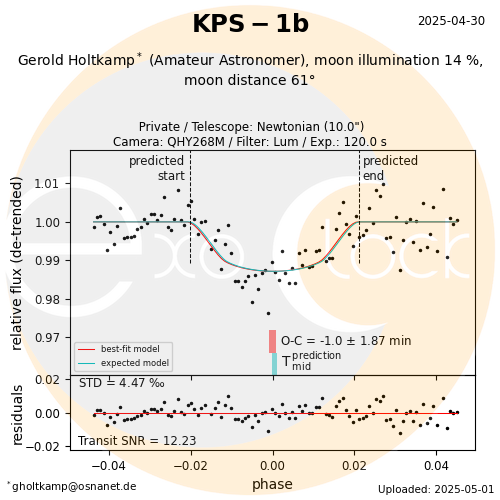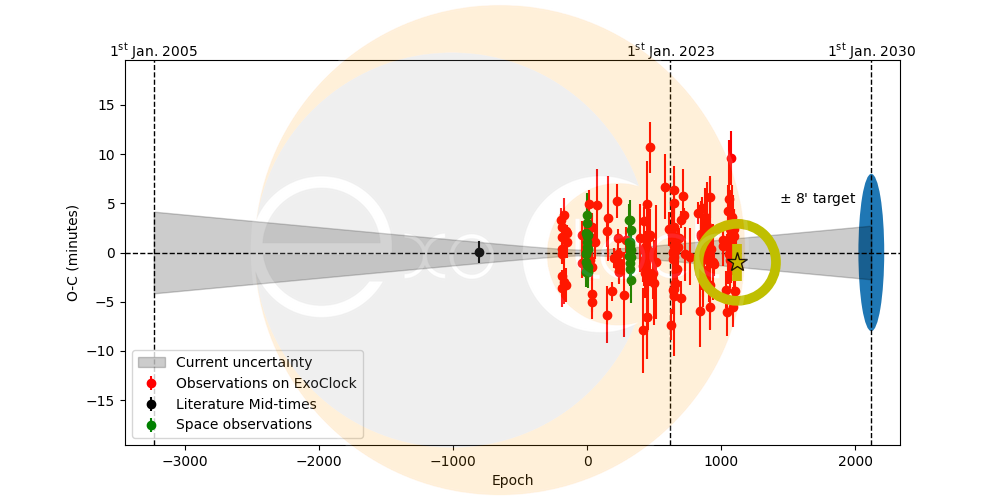Contribution by Dr. Gerold Holtkamp, June 2025
The exoplanet and its parent star are located in the constellation Ursa Major. The measurements were taken from April 30, 2025, at 9:11 p.m. UTC to May 1, 2025, at 12:49 a.m. UTC in Osnabrück, Sonnenhügel. The Moon was 14% illuminated and 61° distant. It rose at 4:55 a.m. UTC on April 30, 2025, and set at 11:26 p.m. UTC, but its dim illumination was not yet disturbing.
The measurement technique used:
Telescope: Skywatcher Newton 250/1200 mm
Mount: Skywatcher AZ-EQ6
Filter: Luminanz (Antlia)
Camera: QHY268M with gain 60, offset 20, chip temperature -10° C
Guiding: Skywatcher Guidescope Evoguide 50 ED with camera ZWO ASI120mm
NINA was used for camera and mount control.

The present measurement and the subsequent evaluation with the hops software of the Exoclock-Project resulted in:
Rp/Rs = 0.114 +/- 0.005 (expected 0.114 +/- 0.004) *
–> Rp = 0,114 x 628.795 = 71.682 +/- 3.144 km. [1]
The exoplanet KPS-1b is thus as large as Jupiter (radius = 69,911 km). The system is 858 light-years from Earth.

The value of the transit's temporal center, which is important for the Exoclock project and is expressed as the difference between the observed and the expected value, is O-C = -1.00 +/- 1.87 minutes**, which is close to the expected value.
The measurement of the transit light curve of the exoplanet Qatar-1b was published on the Exoclock project website. [2]
There is another measurement by the author on kosmos-os.de. [3] The planetary radius determined there agrees well with the current measurement. The same applies to the transit center.
_________________________________________________________________________
* [Rp = Rplanet, Rs = Rstar]
If the star's radius is known, the planet's radius is determined directly from the dip in the light curve. (see also https://kosmos-os.de/messung-der-transitlichtkurven-der-exoplaneten-wasp-84b-und-kps-1b-am-7-und-8-maerz-2024)
** [O = Observed, C = Calculated]
[1]
Data on the star system and the exoplanet at
https://exoplanetarchive.ipac.caltech.edu/overview/kps-1
The radius of the parent star was taken as 0.903 +0.003/-0.003 (Gaia DR2) x the radius of the Sun. The radius of the Sun was assumed to be 696,340 km. The parent star therefore has a radius of 628,795 km.
[2]
https://www.exoclock.space/database/observations/KPS-1b_5421_2025-04-30_Gerold_1561_Lum